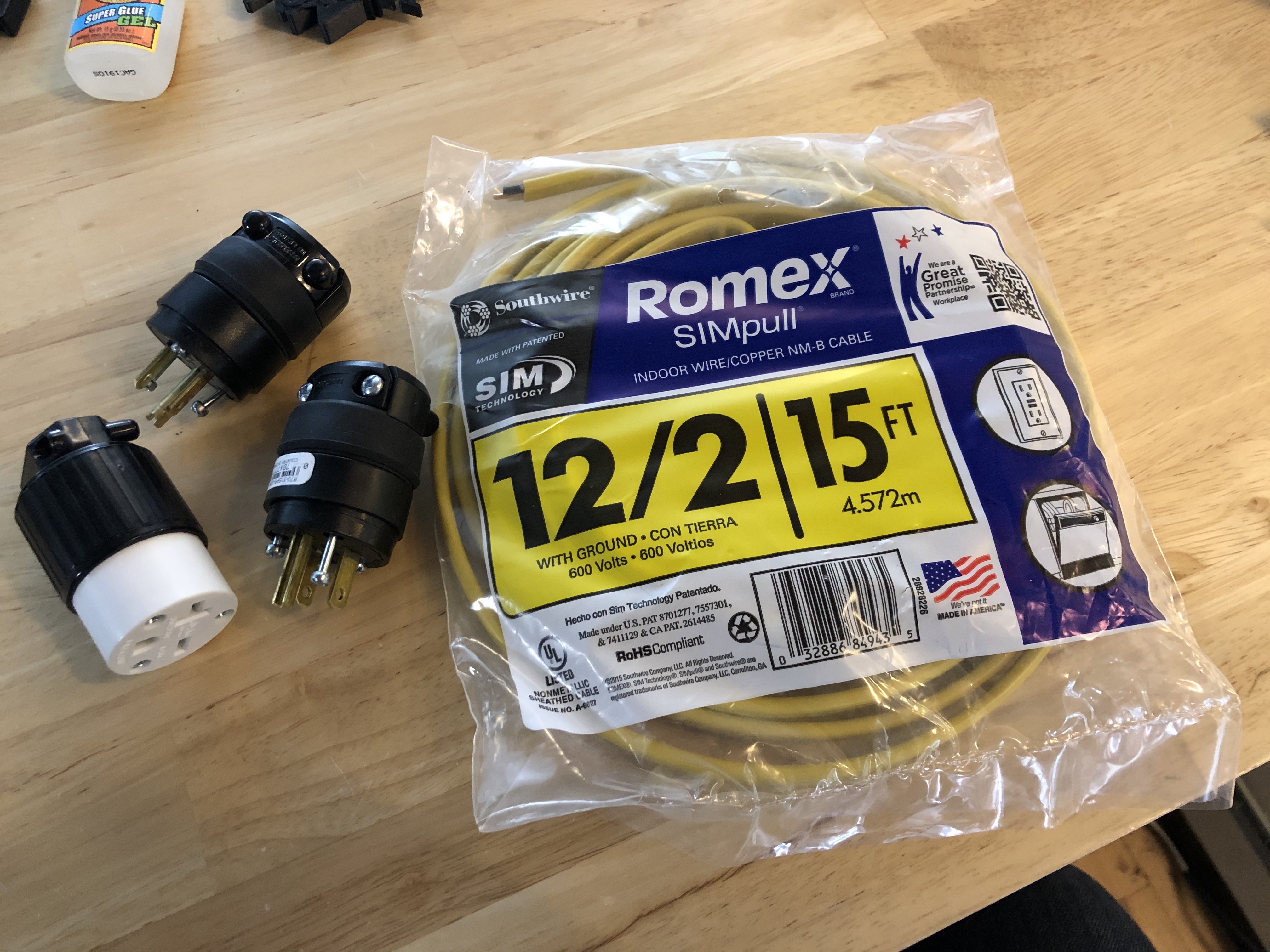So getting my Model Y in a few weeks, and dont have time to do an expensive 30-50A line run from my fuse box to garage for dedicated charger (box is in basement and would require lots of work and wall cutting to run a new line to garage).
I looked around with these crazy expensive 120-240v boxes (like 110-120 and 220-240 Voltage Converters & Accessories over 300 bucks!), so being an electrical engineer I of course came up with the cheapest and simplest solution possible. Figured id share here for other owners.
All you needs is the stuff below
Nema 6-20R(6-20C) 20A 250V Receptacle T-Blade 250Volt Industrial 20A Connector, Easy Assembly 20Amp 250 Volt USA Canada 3-Prong Female Straight Blade Connector, (UL Listed) LK5620R
2x Leviton 515PV 15 Amp, 125 Volt, Grounding Plug, Yellow
Southwire 28828226 12/2 15' NM-B W/G WIRE
So about 30 bucks worth of materials and 30 minutes of your time
Now cut your 12 gauge wire in two, and connect the 2 x NEMA 5-15 plugs to one end of both wires, make sure you wire the hot wire (black) so its the right prong as your plugging into wall.
Next take both open ends of the wire and run them to your 6-20 plug, and connect both hot leads to each lead in the connector, and take both ground wires and tie them together in the ground terminal. You can just snip off the neutral lines here since you dont need them (technically you only need 12 gauge wire with two copper lines for this, just couldn't find any).
Thats it, now you got 15 mph charging without touching anything in your house or expensive electrical work for 30 bucks! Keep in mind the two 120v plugs you plug into have to be on different phases (for example my garage plugs and plug right inside the entry hallway are on diffrent phases and about 12 feet apart so this works perfect).
FYI if your risk averse just have your electrician run a line for you...this works but is not to "code". I have 120v 15A outlets on 20A breakers (and lines are 12 gauge), so I'm using my existing plugs instead of changing them out...if you want to be super safe go with a NEMA 6-15 receptacle, which will still offer over twice the charging capacity.
I looked around with these crazy expensive 120-240v boxes (like 110-120 and 220-240 Voltage Converters & Accessories over 300 bucks!), so being an electrical engineer I of course came up with the cheapest and simplest solution possible. Figured id share here for other owners.
All you needs is the stuff below
Nema 6-20R(6-20C) 20A 250V Receptacle T-Blade 250Volt Industrial 20A Connector, Easy Assembly 20Amp 250 Volt USA Canada 3-Prong Female Straight Blade Connector, (UL Listed) LK5620R
2x Leviton 515PV 15 Amp, 125 Volt, Grounding Plug, Yellow
Southwire 28828226 12/2 15' NM-B W/G WIRE
So about 30 bucks worth of materials and 30 minutes of your time
Now cut your 12 gauge wire in two, and connect the 2 x NEMA 5-15 plugs to one end of both wires, make sure you wire the hot wire (black) so its the right prong as your plugging into wall.
Next take both open ends of the wire and run them to your 6-20 plug, and connect both hot leads to each lead in the connector, and take both ground wires and tie them together in the ground terminal. You can just snip off the neutral lines here since you dont need them (technically you only need 12 gauge wire with two copper lines for this, just couldn't find any).
Thats it, now you got 15 mph charging without touching anything in your house or expensive electrical work for 30 bucks! Keep in mind the two 120v plugs you plug into have to be on different phases (for example my garage plugs and plug right inside the entry hallway are on diffrent phases and about 12 feet apart so this works perfect).
FYI if your risk averse just have your electrician run a line for you...this works but is not to "code". I have 120v 15A outlets on 20A breakers (and lines are 12 gauge), so I'm using my existing plugs instead of changing them out...if you want to be super safe go with a NEMA 6-15 receptacle, which will still offer over twice the charging capacity.






